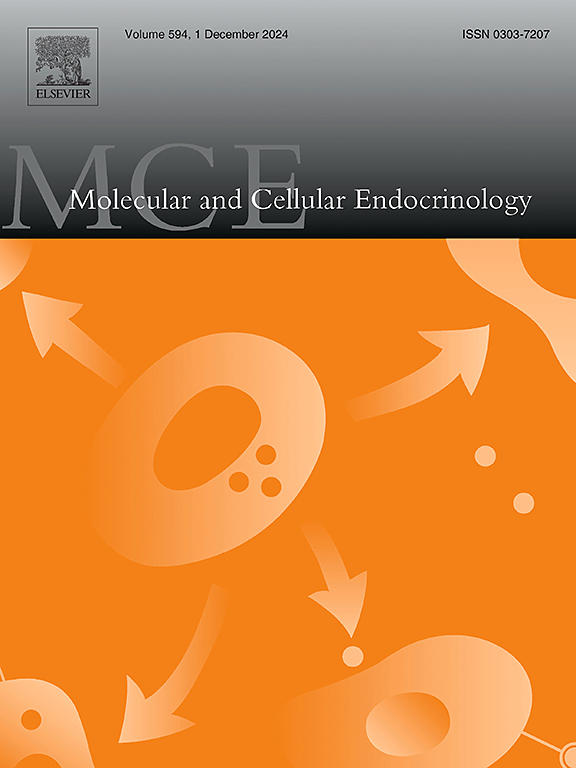Molecular basis of photoinduced seasonal energy rheostasis in Japanese quail (Coturnix japonica)
IF 3.8
3区 医学
Q2 CELL BIOLOGY
引用次数: 0
Abstract
Seasonal rhythms in photoperiod are a predictive cue used by many temperate-zone animals to time cycles of lipid accumulation. The neuroendocrine regulation of seasonal energy homeostasis and rheostasis are widely studied. However, the molecular pathways underlying tissue-specific adaptations remain poorly described. We conducted two experiments to examine long-term rheostatic changes in energy stability using the well-characterized photoperiodic response of the Japanese quail. In experiment 1, we exposed quails to photoperiodic transitions simulating the annual photic cycle and examined the morphology and fat deposition in liver, muscle, and adipose tissue. To identify changes in gene expression and molecular pathways during the vernal transition in lipid accumulation, we conducted transcriptomic analyses of adipose and liver tissues. Experiment 2 assessed whether the changes observed in Experiment 1 reflected constitutive levels or were due to time-of-day sampling. We identified increased expression of transcripts involved in adipocyte growth, such as Cysteine Rich Angiogenic Inducer 61 and Very Low-Density Lipoprotein Receptor, and in obesity-linked disease resistance, such as Insulin-Like Growth Factor Binding Protein 2 and Apolipoprotein D, in anticipation of body mass gain. Under long photoperiods, hepatic transcripts involved in fatty acid (FA) synthesis (FA Synthase, FA Desaturase 2) were down-regulated. Parallel upregulation of hepatic FA Translocase and Pyruvate Dehydrogenase Kinase 4 expression suggests increased FA uptake and inhibition of the pyruvate dehydrogenase complex. Our findings demonstrate tissue-specific biochemical and molecular changes that drive photoperiod-induced adipogenesis. These findings can be used to determine conserved pathways that enable animals to accumulate fat without developing metabolic diseases.
光诱导日本鹌鹑(Coturnix japonica)季节性能量流变的分子基础
光周期的季节性节律是许多温带动物用于确定脂质积累周期的预测线索。神经内分泌对季节性能量平衡和流变的调节作用已被广泛研究。然而,对组织特异性适应的分子途径仍然缺乏描述。我们进行了两项实验,利用日本鹌鹑特征明显的光周期反应来研究能量稳定性的长期流变变化。在实验 1 中,我们将鹌鹑暴露于模拟年光周期的光周期转换中,并检测了肝脏、肌肉和脂肪组织的形态和脂肪沉积。为了确定春分过渡期间脂质积累的基因表达和分子通路的变化,我们对脂肪和肝脏组织进行了转录组分析。实验 2 评估了实验 1 中观察到的变化是反映了构成水平还是由于按时间取样造成的。我们发现,与脂肪细胞生长有关的转录本(如富半胱氨酸血管生成诱导剂 61 和极低密度脂蛋白受体)和与肥胖有关的疾病抵抗转录本(如胰岛素样生长因子结合蛋白 2 和载脂蛋白 D)的表达量在预期体重增加时有所增加。在长光周期下,参与脂肪酸(FA)合成的肝脏转录物(FA 合成酶、FA 去饱和酶 2)下调。肝脏脂肪酸转运酶和丙酮酸脱氢酶激酶 4 的表达同时上调,表明脂肪酸摄取增加,丙酮酸脱氢酶复合物受到抑制。我们的研究结果表明,特定组织的生化和分子变化推动了光周期诱导的脂肪生成。这些发现可用于确定使动物积累脂肪而不发生代谢疾病的保守途径。
本文章由计算机程序翻译,如有差异,请以英文原文为准。
求助全文
约1分钟内获得全文
求助全文
来源期刊

Molecular and Cellular Endocrinology
医学-内分泌学与代谢
CiteScore
9.00
自引率
2.40%
发文量
174
审稿时长
42 days
期刊介绍:
Molecular and Cellular Endocrinology was established in 1974 to meet the demand for integrated publication on all aspects related to the genetic and biochemical effects, synthesis and secretions of extracellular signals (hormones, neurotransmitters, etc.) and to the understanding of cellular regulatory mechanisms involved in hormonal control.
 求助内容:
求助内容: 应助结果提醒方式:
应助结果提醒方式:


